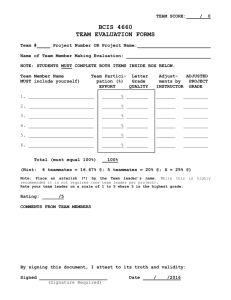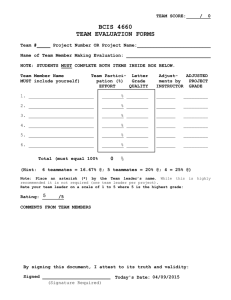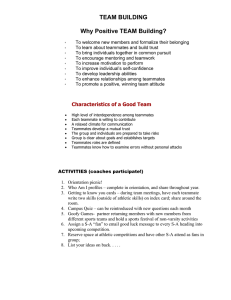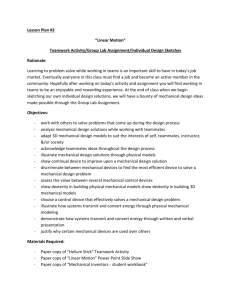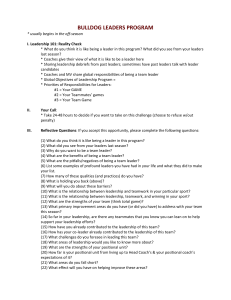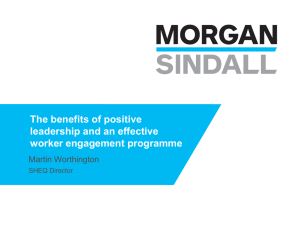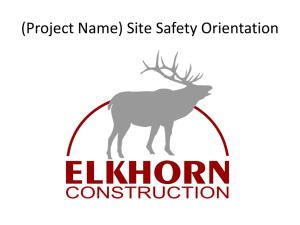Safety Culture- Building a Great One
advertisement
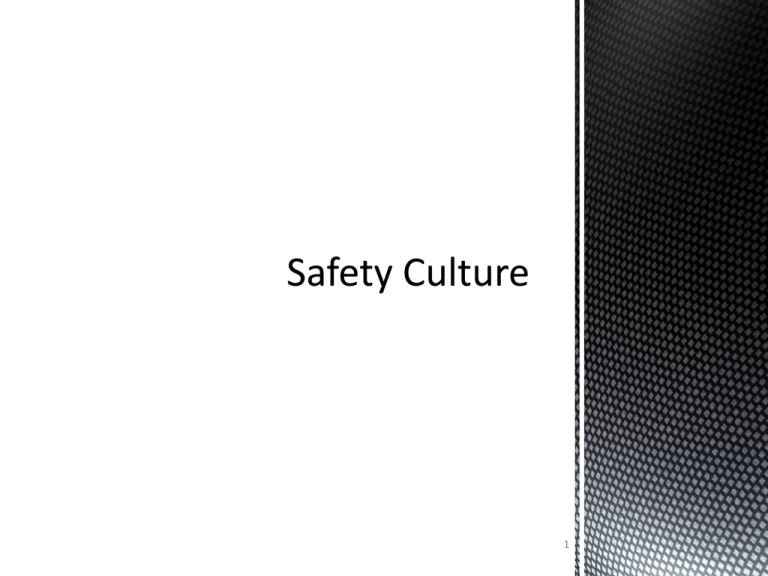
1 The MBMA believes the information in this presentation to be accurate and delivers this presentation as a community service. As such, it is an academic presentation which cannot apply to every specific fact or situation; nor is it a substitute for any provisions of 29 CFR Part 1910 and/or Part 1926 of the Occupational Safety and Health Standards. 2 Objectives: Examine the current culture in your workplace in regards to the management of safety and health. Examine key elements vital to strengthening a sustainable safety culture. 3 Safety Culture – the product of individual and group values, attitudes, competencies, and patterns of behavior that determines the commitment to an organization’s health and safety programs. Safety Culture determines how individuals in your organization commit to: Personal Responsibility for Safety Foster Trust in one another Enhance and communicate safety concerns Adapt and modify behavior based on lessons learned from mistakes 4 Building a strong safety culture is not a top-down strategy. It involves every level of the organization. It means being committed to safety regardless of other concerns in your business. 5 Production First Safety Culture – Get the product out the door as fast as you can. It doesn’t matter how safe people are, or how many injuries they have. The almighty dollar rules this mentality. High injury rates Low worker morale High worker Turnover Rarely compliant “It’s not MY job!” Mentality VPP and SHARP sites – These are the companies with top notch safety cultures. Low Injury and Illness Rates High worker morale Low worker turnover “That’s how we used to do it” mentality Always looking to improve their safety 6 7 One of the best places to start is setting Safety as one of your Core Values. Core values are what you live and breathe every day. These are the beliefs that define who you are and how you react during certain situations. Do you make two trips with the overhead crane when moving material, or do you overload your crane just to “save time?” Do you stop at the red light at 3am, even though you do not see any other cars on the road? Priorities Change. Typically, priorities are something that need to go on a “To-Do” list. Core Values need to go on a banner! 8 Managers and supervisors set the tone for your safety culture. The leadership team MUST “talk the talk” AND “walk the walk.” The leadership team allocates resources – people, time, and invests money in their teammates, demonstrating their commitment to safety. Leaders know that safety adds value to the company. Establish and enforce high standards for performance. As a leader in your company, you get the behavior that you accept. If you accept shortcuts and bend safety rules to meet production deadlines, you are setting your team up for failure. The fastest way to destroy a safety culture’s credibility is through a leadership team’s disregard for the safety rules. 9 Empower individuals to successfully fulfill their safety responsibilities to themselves, their family, and their coworkers. Everyone holds themselves and each other accountable for safety! Give your teammates the authority to stop unsafe behavior without fear of negative repercussions. Encourage your people to correct unsafe conditions as soon as possible. There is no better time to fix something than as soon as it is identified. Provide multiple options for your team to report unsafe conditions and/or behaviors – Safety Teams, Anonymous Suggestion Boxes, Open Door Policies, behavior based programs 10 Build TRUST! Do what you say you will do, when you say you will do it! Ensure timely and appropriate responses to identified hazards reported by your teammates. Have an action plan in place to address and remove the hazards. Reinforce current safety practices through ongoing teammate coaching and discipline, where necessary. Ongoing training demonstrates lessons learned from incidents and educates new and existing teammates in proper safety techniques and procedures. Celebrate the successes along the way! 11 Set Lofty Goals – SHARP/VPP Best Mark with others who have achieved more success. Continuously review your own policies and procedures, especially after an incident. Re-train your teammates when deficiencies have been corrected. 12 13 Safety as a Core Value • Core Values go on a Banner, not a list! Management Commitment • Lead by example! Empower your team • Give them the authority to correct unsafe behaviors and conditions. Communicate, Communicate, Communicate Strive to be better today than you were yesterday! 14 15 You just checked into your hotel, round the corner to head towards your room, and you see a guy standing on a bucket on the top rung of a ladder. What do you do? 16 You see the General Manager of your company walking across the production floor and he is not wearing all of his PPE. What do you do? What if it is that guy on the line who cusses and complains about everything in the world? Would you stop him, knowing he is going to lose his temper and make a scene? 17
